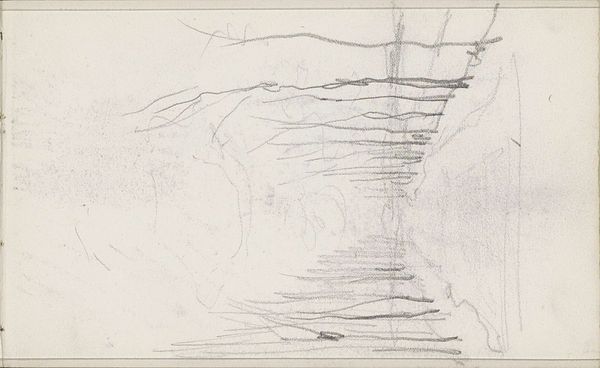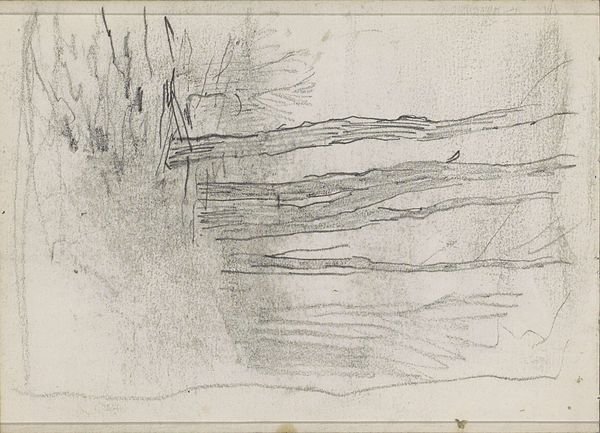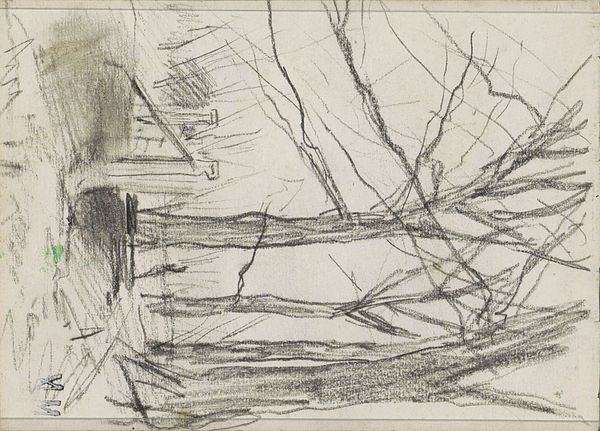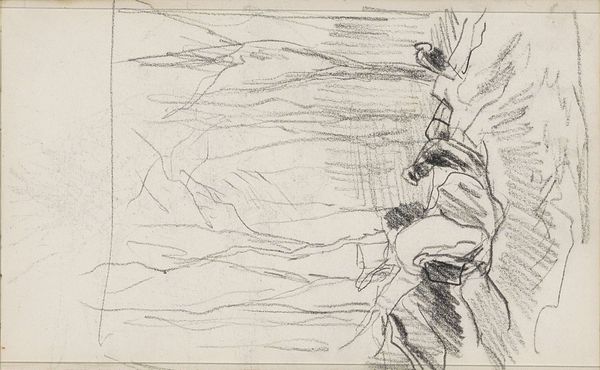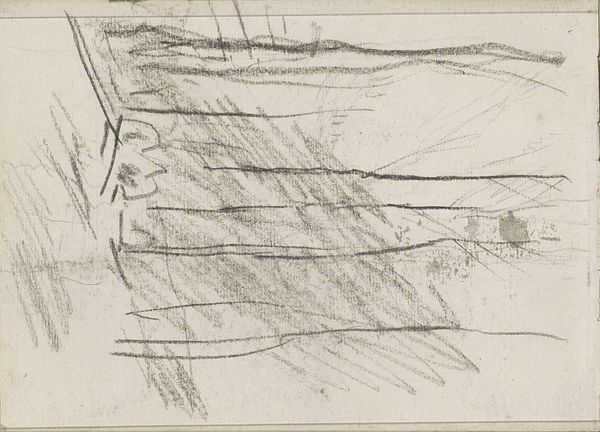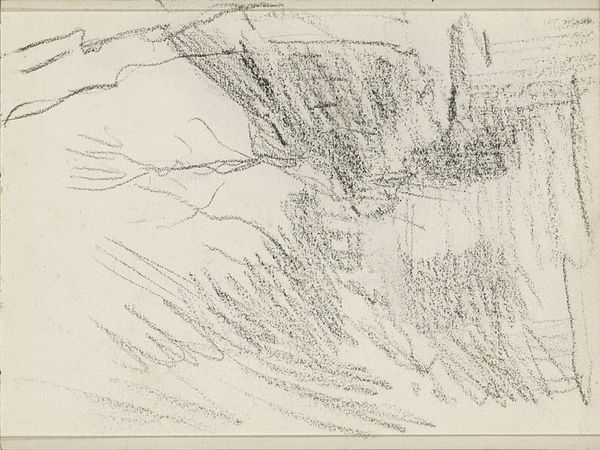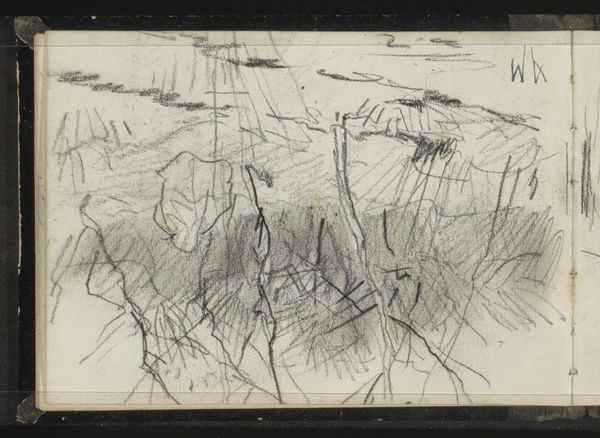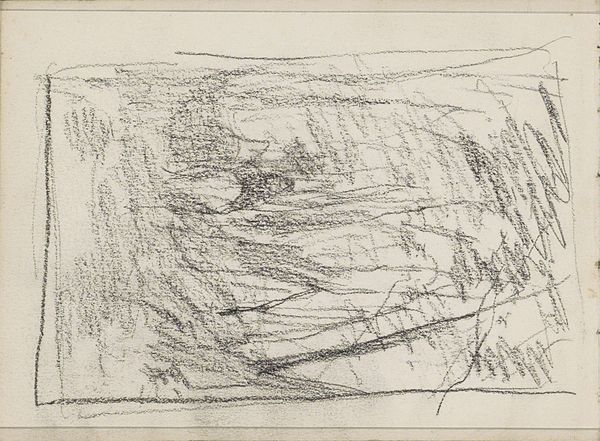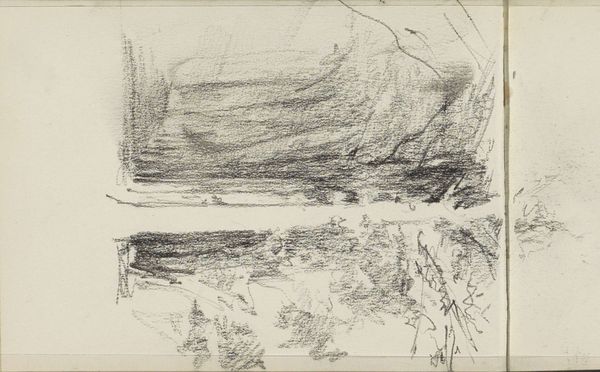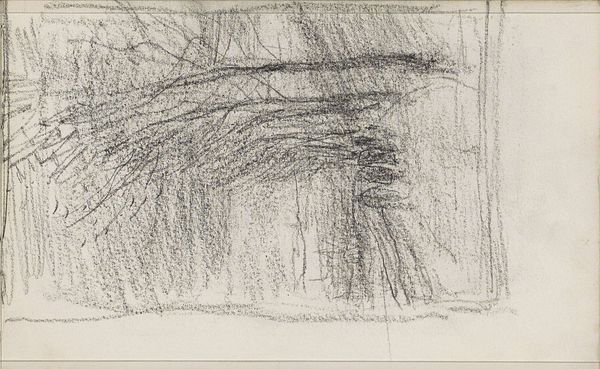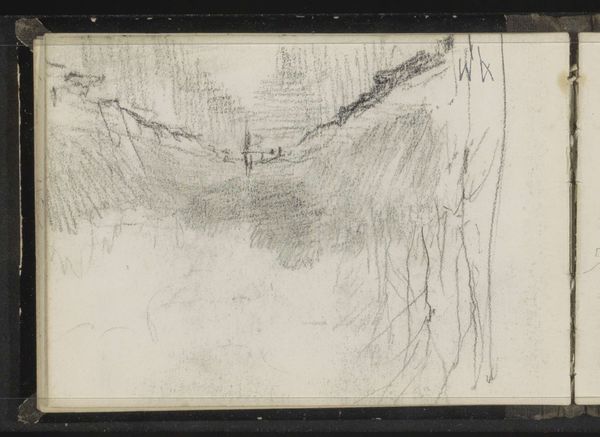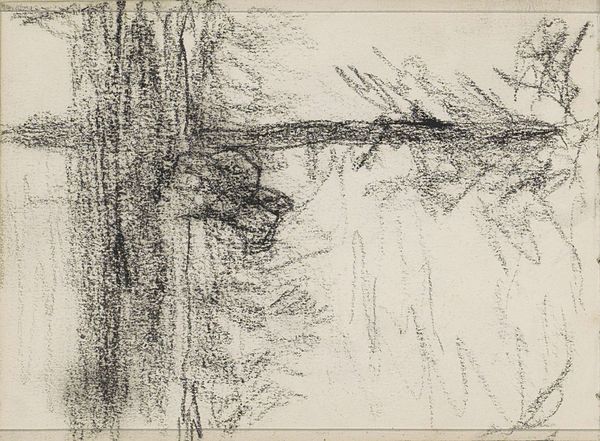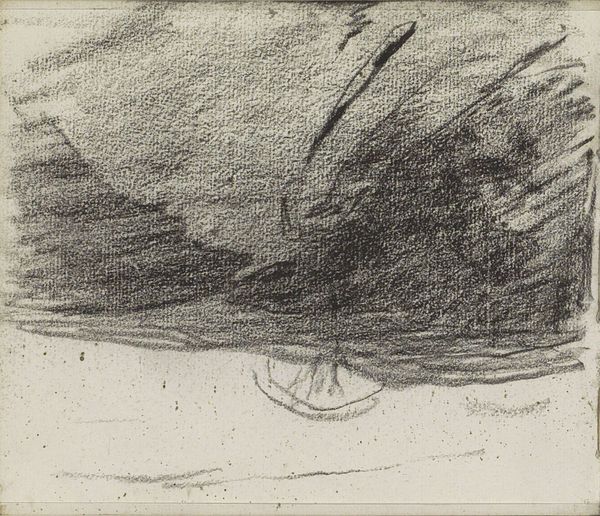
#
amateur sketch
#
light pencil work
#
pen sketch
#
pencil sketch
#
incomplete sketchy
#
hand drawn type
#
personal sketchbook
#
forest
#
pen-ink sketch
#
sketchbook drawing
#
initial sketch
Copyright: Rijks Museum: Open Domain
Editor: This is "Figures in an Open Space in a Forest," a pencil sketch by Anton Mauve, made sometime between 1848 and 1888. The drawing has a really raw, unfinished quality to it. What compositional elements strike you most powerfully? Curator: The interplay of line and value are most notable. The composition is defined by an expressive network of lines, ranging from delicate, barely-there marks to bolder, more assertive strokes that delineate form. The contrast helps suggest the interplay of light and shadow within the wooded setting. Editor: So it's the abstract elements, rather than the subject matter, that define the work for you? Curator: Precisely. Consider the application of hatching and cross-hatching. Through careful modulation, these areas create depth and volume, transforming a simple sketch into an evocative representation of space. Editor: That makes sense. I hadn’t considered the hatching as more than just, well, scribbles. Are you suggesting that these techniques point towards any deeper philosophical underpinnings? Curator: The emphasis on mark-making calls into question the very act of representation. The drawing privileges the artist's process of seeing and translating their perceptions onto the page. The materiality of the drawing itself – the graphite on paper – becomes a central theme. It forces the viewer to contemplate the constructed nature of our own experience. Editor: It's like Mauve is showing us how he sees rather than just what he saw. I’ll certainly pay more attention to the formal choices in future artworks. Curator: Exactly. And, one hopes, contemplate the processes that define all vision.
Comments
No comments
Be the first to comment and join the conversation on the ultimate creative platform.
